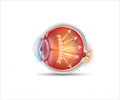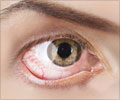In the United States, the management of glaucoma costs about $2.5 billion per year. Of the $1.9 billion in direct costs, glaucoma medications account for an estimated 38% to 52% of the total. In an article published in the January 2008 issue of the American Journal of Ophthalmology, researchers from The Texas A&M University System Health Science Center College of Medicine, Temple, Texas; analyzed the economics of medically managing glaucoma. The yearly costs to patients of various topical glaucoma medications were calculated and significant price differences and increases in cost over time were found.
The researchers looked at four classes of pharmaceuticals; ©¬-blockers, prostaglandins, ¥á2-agonists and carbonic anhydrase inhibitors. They compared both brand-name and generic formulations, evaluated how accurately the bottles were filled and how accurately the medications could be dispensed by patients. Using results from earlier studies, the increases in Average Wholesale Prices (AWP) were also evaluated from 1999 through 2006.Nonselective ©¬-blockers remain the most inexpensive class of glaucoma medications. For all categories of drugs, calculated yearly cost ranged from $150.81 for generic timolol maleate 0.5% (©¬-blocker), to $697.42 for Cosopt (combination formulation), to as high as $873.98 for a three-times-daily dose of Alphagan P 0.15% (¥á2-agonist). Among brand name ©¬-blockers, yearly cost ranged between $203.47 for Timoptic 0.5% and $657.24 for Betoptic S. Generic ©¬-blockers consistently were more economical than their brand-name counterparts. Yearly cost of prostaglandin analogs ranged from $427.69 for Travatan to $577.62 for Lumigan. The two carbonic anhydrase inhibitors, Azopt and Trusopt, yielded similar economic profiles. The generic selective ¥á2-agonist brimonidine tartrate 0.2% costs approximately $352.89 and $529.34 per year for the respective two and three drops daily per eye regimens.
AWP trends through two periods, 1999 to 2006 and 2002 to 2006, showed significant increases, even within a category. For example, in the ©¬-blockers, Betoptic S increased nearly 100 % from 1999 to 2006, while Timoptic, increased only 11.7 %. In the period 2002 to 2006, the AWP of Timoptic remained constant.
Writing in the article, Steven D. Vold states, ¡°Physicians consider many factors when treating patients with glaucoma. Ultimately, the goal of eye care providers is to give the best, most cost-effective care to their patients. Our study addresses the calculated cost per year passed on to the patient for single medication treatment plans¡¦As newer medications and treatment schemes are introduced, future studies will be needed to update the rapidly changing economic information pertaining to the medical management of glaucoma.¡±
Source-Eurekalert
LIN/M











